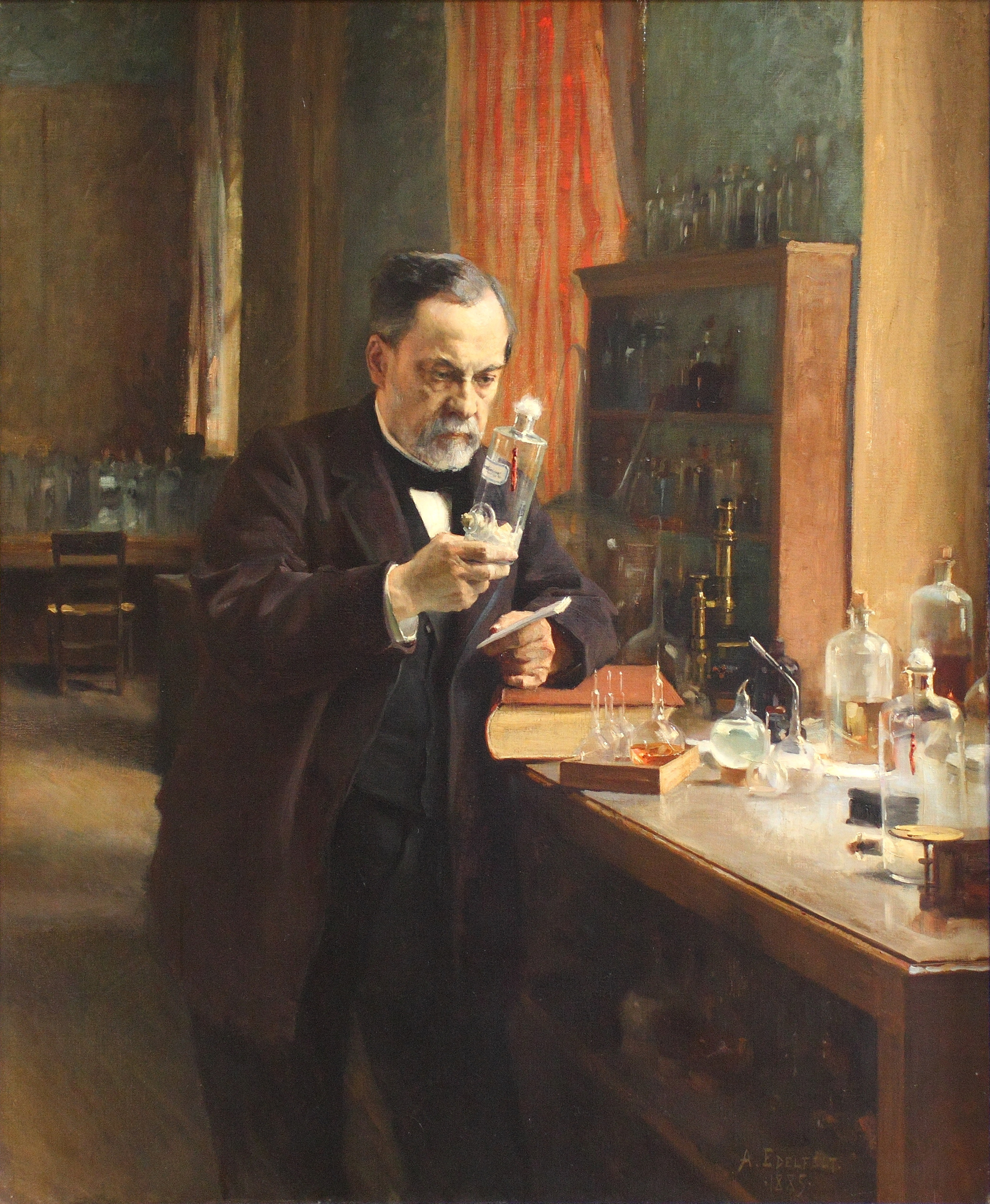This topic takes on average 55 minutes to read.
There are a number of interactive features in this resource:
 Biology
Biology
The work of people like Jenner and Semmelweiss led doctors and scientists to think that perhaps infectious diseases were caused by an infectious agent or 'germ'. This was the germ theory of disease. It took a very long time for this idea to be accepted. Much of the work that led to a wide acceptance of the germ theory is down to Louis Pasteur, helped by the development of microscope techniques by people such as Robert Koch which made microorganisms visible and identifiable. Pasteur made a number of important steps forward.
Many people at the time believed that living things could arise from non-living things by the action of God – a theory known as spontaneous generation. Pasteur was convinced that any growths that appeared, such as mould on food as it goes bad, were from microscopic organisms already present in the air.
First Pasteur showed that the results of his main rival were dubious. Then he showed that if he boiled broth and immediately sealed the container it would stay clear. But once he added material which had been exposed to the air, microorganisms grew in the broth and it turned cloudy. Finally he designed a series of experiments using swan necked flasks which showed once and for all that any microorganisms which appear in boiled broth come from the air.

Louis Pasteur